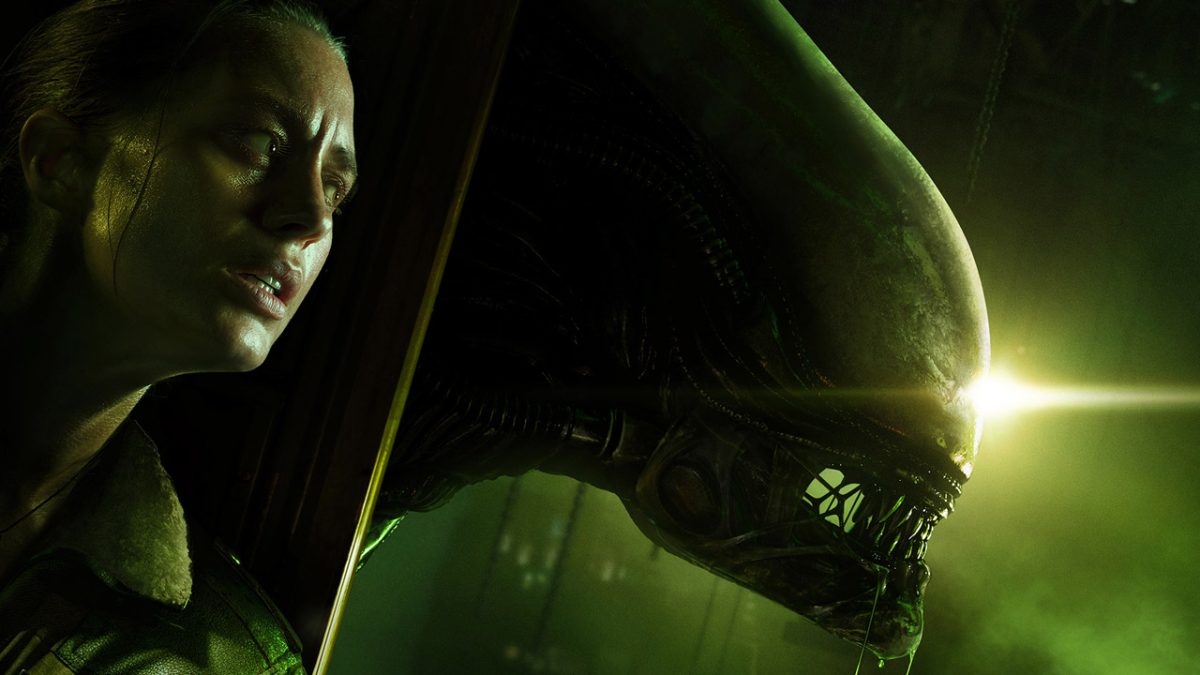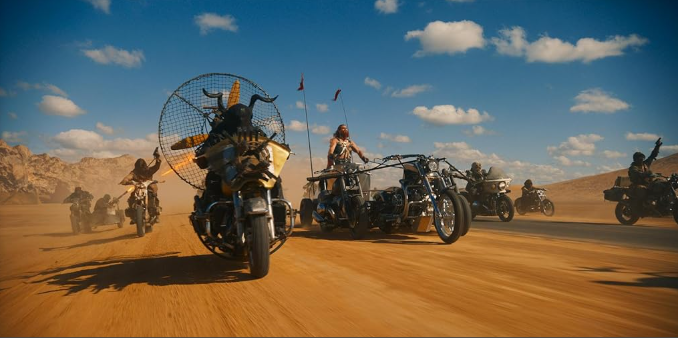Survival horror is a very popular video game genre, as it can be the most immersive form of horror media. Yes, horror films, novels, and shows can most definitely be terrifying when done right, but horror video games can give you a completely different experience, since it’s something that you are physically controlling. Instead of watching a killer murder the main character, you are playing as the main character, and if you mess up, it’s your fault that they die. To be effective, these type of games typically focus on several factors, but most namely are exploration, atmosphere/enemies, combat, and item management/rarity. There are many other very important things that go into making a game like this, but they all fall under these four umbrella categories. To illustrate this, I’ll compare and discuss four of my favorite survival horror games, all of which feature a heavy emphasis on one of these elements: Bioshock, Alien: Isolation, Resident Evil 7: Biohazard, and Prey. Of course, there are countless games I could bring up, but these four all serve as great companion pieces while also catering to different design elements of survival horror. Before getting into it, it’s also important to note that all of these games do incorporate all of the categories to some degree, but all most definitely have a heavier focus on one over the other. I’ll discuss the four categories I’ve mentioned and the respective game that I believe fits the most with them, and how it still incorporates the others.
Category One: Exploration & Prey (2017)
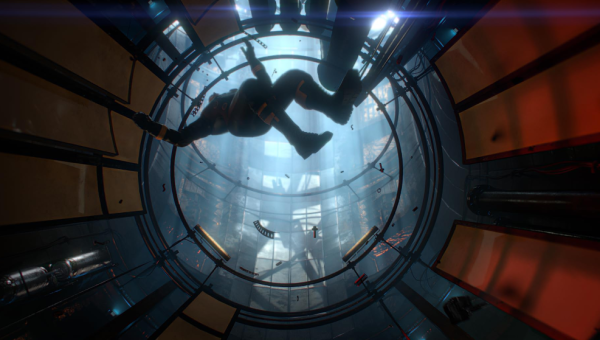
While all of the games I mentioned encourage you to explore their environments, none do it more so than Prey. I’ve always found this game to be truly unique in the genre because of how many options it gives the player; it truly does want you to make your own experience, and allows you to experiment with its systems at every moment. Most horror games will give you an open area to explore, but at the end of the day, still end up being very linear, only really giving you the illusion of freedom. Scary moments are scripted, enemies and items are deliberately placed to make it as tense as possible, and save points can be fairly few and far between in order to make you feel more anxiety. Of course, this isn’t necessarily a bad thing; almost the entire Resident Evil series operates on this design philosophy, and it manages to consistently deliver some of, if not the best games of each year. However, it doesn’t work for every type of game, and this is where Prey becomes truly unique. Every decision you make ends up impacting something later in the game, and you never feel as if the game is unfair or too difficult, as it leaves everything completely up to the player.
Every single scenario in the game can be approached in a million different ways, and the wide variety of weapons and powers the player is allowed to choose from allows you to create your own type of character. Talos One is a massive space station, and every miniscule corner of it has some sort of item hiding in it. You can prioritize upgrades on your character, PSI abilities, and weapons to cater to many different playstyles; you can load up on ammo and maximize the damage from your guns, upgrade stealth perks to avoid enemies almost entirely, or research aliens and upgrade your PSI powers to trick and evade them. Mixing and matching upgrades across all fields leads to a unique experience for every player, and can even impact the path of the story, which can have several different endings. In addition to the character build you choose, the way you choose to explore the station can vary quite a bit; so many areas can be completely missed if you don’t take your time, but methodical players are rewarded with lore, upgrades, or useful equipment. Searching every square inch of a room or digging through the emails of every computer can be very beneficial in the long run, as the alien enemies become quite tough later in the game- trust me, you want to be equipped when you encounter the nightmare. There’s also the system of recyclers and fabricators, which allow you to turn anything you don’t need into materials to craft more useful items, like medkits, ammo, and various weapons in case you lose one. This is a genius system that I’m very surprised hasn’t been replicated in another game; it makes you want to pick up everything you can, making your somewhat small inventory space that much more important. I found myself doubling back quite often to pick up some items I had to leave behind until I could dump everything in a recycler.
As far as the other categories go, Prey has a pretty strong emphasis on the atmosphere of Talos One; exploring areas filled with Mimics and Phantoms becomes very unsettling, especially when you realize that the Phantoms were once members of the station’s crew, and can even see them speak if you have subtitles on. The enemy design is creative and unique, and Prey always knows when to introduce new enemies after you’ve learned everything about a specific type of them. Very little of the game’s setting, story, and threat is explained to you, and the twist that occurs in the first hour instills a paranoid and untrusting feel in the player from the very beginning. The game’s combat admittedly isn’t the best; powers are fun to use and the guns feel fine, but it’s nothing mind-blowing. I don’t have the biggest problem with this, since it’s not really what Prey is about. As long as the gunplay is serviceable, which it very much is, I’m fine with it since the rest of the game is designed so brilliantly. Resources are never very hard to find, either, as there’s usually enough ammo and healing items to get by; you can also just craft more resources in a fabricator if you need to. However, you absolutely must explore every nook and cranny of Talos One if you want to survive. There’s plenty of items to survive on, but you have to be willing to put in the work to find them.
Category Two: Atmosphere/Enemies & Alien: Isolation (2014)
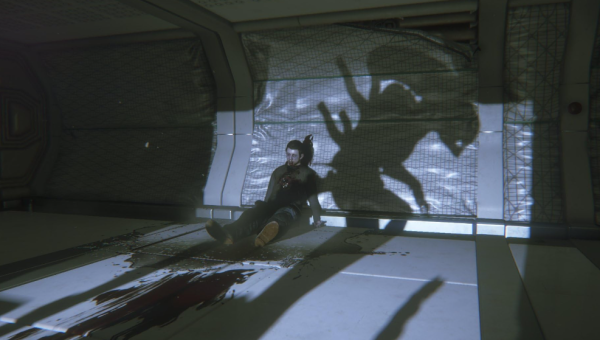
While this category could have gone to many different games, I just had to give it to Isolation. This is what I would consider to be the scariest game I’ve played, almost entirely due to how good the enemy AI is. The Xenomorph will hunt you down like a real animal, leaving you hiding in lockers and under tables just praying that he doesn’t hear your character slightly move or just decide to randomly look there. Aside from a couple points in the story, he’s always lurking somewhere, just waiting for you to get a little too confident and put you back in your place. There were plenty of times where I figured I was safe and started to run around, only to be instantly tracked down and killed. You only have two items that can repel the Xenomorph, a flamethrower and a Molotov, and he becomes resistant to them after you use them too many times, meaning you want to scare it off only when absolutely necessary. In addition to this, you also have human enemies, androids, and Facehuggers that all want you dead. The human enemies are probably the least of your worries, as they can be taken down by a well-aimed shot or a noisemaker to draw the Xenomorph to them, but of course, that means that the Xenomorph is also now on your tail. The androids, or Working Joes, are some of the most disturbing android characters I’ve ever seen, and they are absolutely ruthless. If you try to kill them with the basic revolver, it takes four entire headshots to drop a Joe. I’ve found that the best strategy is to use the stun baton or an EMP grenade to temporarily disable them and then finish the job with a wrench, but baton charges are hard to come by, and EMPs take a lot of resources to craft.
Aside from the enemies, the setting of the Sevastopol is just so unsettling to navigate. Disfigured bodies are littered throughout the space station, showing what the Xenomorph will do to you if you’re not careful. There’s barely ever any music, leaving you to navigate the tight hallways and rooms in complete silence, only interrupted by the superbly terrifying sound design. Every sound in this game just puts me on edge- humans yell out at you, Joes taunt you before breaking your neck, and the Xenomorph’s sudden stomps and screeches are sure to make your stomach drop. The guns all feel very unstable and heavy, making you wonder if if Amanda knows exactly how to operate them. This mixed with how loud and sudden gunshots sound makes human enemies scary in a different way from the other enemies, Even the way items like the lockers and vents sound can be very unnerving; the loud noises they make scare you into thinking that it will alert a nearby enemy. I could write a whole paragraph about the anxiety that you feel while waiting for a save point to finish loading, knowing that if an enemy reaches you before that third beep, you’re done for. And, of course, there’s the constant beeping of the motion tracker, always reminding you that someone or something dangerous is close. One of my favorite parts of the whole game is how well it captures the atmosphere of Ridley Scott’s original 1979 film; it’s got a similar style of technology that’s both retro and futuristic, which blends so well with H.R. Giger’s alien environment and creature designs. It makes you feel as if you are traversing the corridors of the Nostromo, almost putting you in Ripley’s shoes (especially since you play as her daughter), which is so much fun to a big Alien fan such as myself.
Alien: Isolation isn’t necessarily a game that emphasizes exploration as heavily as the other three, but that’s just fine for what the game is trying to be. Yes, it puts you in big areas to explore for one mission, but the path is ultimately pretty linear when you think about it. There is a lot of backtracking, but I think that this choice was mainly made to force the player to retread the already monumentous task of avoiding the Xenomorph to get somewhere. Combat is very rare in Isolation, as you’ll spend most of the game in stealth, sneaking around an alien or groups of humans. Every now and then, you’re forced to dip into your ammo and gun down a Joe or human, and it can be pretty fun when you get to use some of the resources you’ve been saving for so long, but these sections are very rare. This is not really a shooting game, though, and it wouldn’t work nearly as well as it does if it focused more on gunplay. I want it to make me feel scared, and being helpless in most scenarios works very much to the advantage of the game. Resources can be pretty limited, but never enough to be a huge issue; I was sometimes unable to craft an extra noisemaker or EMP mine for security of mind, but I always had enough to make sure I was stocked on medkits and molotovs. I actually found myself leaving items behind fairly often due to the fact that I couldn’t carry any more; maybe this problem would be remedied by a higher difficulty. Alien: Isolation is a much more slow-paced and methodical experience than the other three I’ve mentioned, but it still shares many design elements with them, and provides what are easily the scariest moments because of this.
Category Three: Combat & Bioshock (2007)
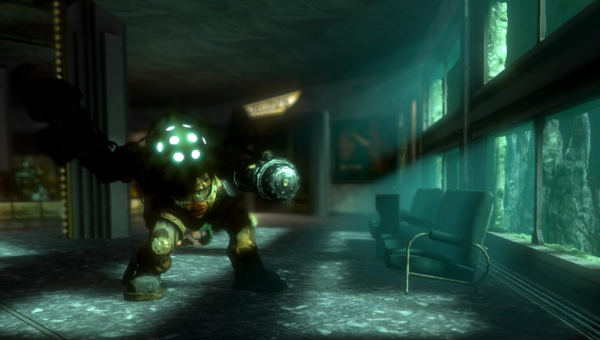
It pains me to not put Bioshock in the atmosphere category, but there’s no denying that it provides what is easily the most engaging and unique combat of the bunch. You’re given a wide variety of weapons, all of which have three different ammo varieties, and the ability to modify yourself with eleven different plasmids, which allow you to do a wide variety of things, such as electrocute your enemies, pick up far away items with telekinesis, and send hordes of bees towards your foes. In addition to this, you’re allowed to choose specific upgrade paths for all of your weapons, plasmids, and general character attributes, allowing you to mold Jack to play like you want. You can prioritize plasmids, which do the heavy lifting before finishing an enemy off with a firearm, or just blow enemies away and only use your powers when you need to. Combining different plasmids, guns, and ammo types can make for some very fun discoveries; the electrocution and wrench-to-the-face is a classic, and I’ve always loved the combination of throwing enemies upwards with a tornado before shooting them out of the air with a shotgun. I’ve played through Bioshock a good few times, and I always love trying out a new plasmid or ammo type I hadn’t used that much in previous runs and learning how much fun it is to freeze enemies before blowing them up with a grenade launcher.
The wide variety of enemies mixed with this large arsenal encourages the player to experiment; before you can fully research an enemy with the camera, you have to adapt to the situation and learn convenient ways to take down different types of splicers in the heat of the moment. And, once you’ve learned the effective strategies, you can continue to try and discover some of the more fun ones. The genius of Bioshock really cannot be understated- it’s commonly seen as one of the best games of all time, and is in my top five, but I still don’t think that people really appreciate how well designed the game is. It’s a very immersive experience, as you’re thrust into the city of Rapture with no knowledge of what’s happening, and the protagonist is completely mute to serve as a self-insert for the player. I’ve always been amazed by the way that Bioshock is able to mix one of the best stories in any video game with gameplay this unique and fun; it was a true innovation for the time, and stands as one of the single most influential video games of all time. The way that most modern first person shooters allow the player to experiment with its systems and environments can be traced back to this game in some way; it was a breakthrough for the genre, and is still a great game to this day.
Bioshock may be the easiest to compare to other categories out of the four; Rapture is such a large and expansive area with so many hidden rooms and corners to find. The path through the game is linear, yes, but the room for exploration inside of it goes far beyond one specific pathway. I find something new to explore in most areas almost every playthrough, and I’m always discovering new hidden items tucked away in hard to reach areas. The telekinesis plasmid comes in handy a lot when exploring, as you can use it to grab far away items; I always enjoy just randomly activating it and seeing what random item can fly into my hand from across the room. Like I mentioned earlier, Bioshock is just dripping in atmosphere; the city of Rapture has so many characters and locations to uncover, with deep and rich lore that the player is left to uncover themselves. The technologically advanced version of the 1960’s art deco style is memorable and iconic, creating some of the most engaging and gorgeous environments I have ever seen in a video game. The elegance of Rapture is brilliantly juxtaposed with the corruption and horror lying beneath the surface, perfectly illustrated by the first moments of the game: you enter and see a statue of Andrew Ryan with a banner claiming that this is essentially a utopia, only to immediately be greeted by disfigured psychopaths after taking the elevator. Each different area of the city has a distinct feel to it, with its own type of unsettling environmental designs; I’ve always loved the heavy use of wordless storytelling scattered throughout the city. Item management isn’t really an important part of Bioshock, but it makes sense; it’s much more action and combat focused than the other three, so you’re always supplied with a steady stream of medkits, ammo, and plasmid refills.
Category Four: Item Management/Limited Resources & Resident Evil 7: Biohazard (2017)
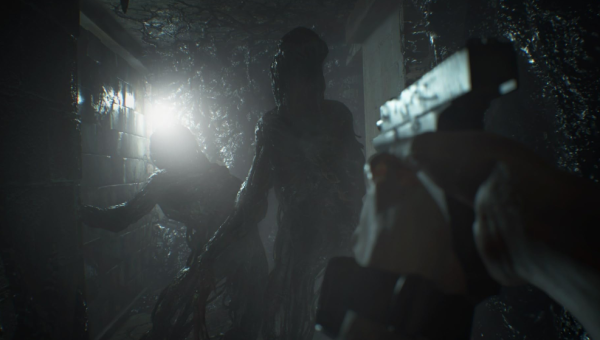
What is in my opinion the scariest Resident Evil, Biohazard is so tense for many reasons, but the main one is just how tight ammo and resources can be. You simply cannot afford to waste bullets; avoiding enemies that you actually can kill is essential at times, and when it comes to the ones you can’t, it’s not even worth shooting them to slow them down. This was a complete turning point for the series; limited resources has always been an important factor in Resident Evil, but it’s done to an extreme degree here, and the first person perspective puts a fresh spin on things. The guns all feel very crisp and responsive to shoot, but the way the enemies move makes it very easy to waste bullets. You’re encouraged to go for headshots, since it’s pretty much the only viable way to kill an enemy, but they frequently weave through the already tight environments, trying to get you to give up a few of your valuable shots. In addition to how difficult it can be to land a shot, every single enemy in this game is a bullet sponge. The basic mold monsters can take a solid three or four shots to drop, and bosses can endure a ludicrous amount of damage before going down.Biohazard also introduced a new mechanic to the series: crafting. Before, you could combine herbs to make healing items and increase your health, and sometimes make a bit of ammo, but that was about it. Now, the items you find to make bullets and heals require a lot of the same components, requiring you to make frequent difficult decisions based on which one you need more in the moment. There’s no shop system in this game like there is in a few other entries, so you need to ensure that you’re searching every cabinet and corpse for the few items you can find.
Biohazard blends this element with the other categories to make a truly memorable experience; while the path is pretty linear, there’s a lot to find, and you can easily miss some collectibles or resources. The atmosphere in this game is pretty unique to the series, abandoning its city landscapes, high-tech labs, and Spanish villages of the past and instead puts the player in a swampy area of Louisiana, creating an entirely different type of horror than we’ve seen from Resident Evil. The enemies and setpieces are very clearly Texas Chainsaw Massacre-inspired, leading to some really disgusting areas to explore. Everything is slimy and covered in mold, even the food that the villains eat. It feels like the house you explore was flooded by the nearby swamp for a period of time, and they just never bothered to clean it. As far as the enemies go, they’re some of the best in the series’ history; the Baker family is terrifying, as they are unable to be killed unless it’s a boss fight. They chase you through hallways, taunting you and getting angry, only to brutally kill you if you’re caught. Some great performances really sell the entire family, and they might be the best villains in any Resident Evil. Combat is very frequent in this one, especially towards the end of the game, but you’re often encouraged to avoid enemies when possible. You do end up doing a lot of shooting, but I always tried to dodge enemies when I could our maybe just shoot them once or twice to stun the molded and then run past. The limited resources mixed with these other elements of horror game design work together to create what is by far the most unique and terrifying Resident Evil experience of all time.
While playing through Isolation the other week and finding myself frequently unsettled by the game’s ruthless design, I began to think about why I love horror games so much, and why I consider these to be some of the best ones. I hope I was able to illustrate why I believe these are the four most important categories when making a horror game, as they’re common trends I’ve noticed throughout almost all of them that I’ve played, not just the four I came up with here; the four examples I did provide just serve as both a great illustration of my points, while also being great games. I recommend all of them if you’re into horror, or even just good survival games or interesting stories. They’re all great experiences, and contain some of the most unsettling moments I’ve witnessed across any form of media. Exploration, atmosphere, action, and limited resources are the factors that make horror games scary, and when a game can balance all four of them, it can truly be among the most terrifying pieces of media ever made.
